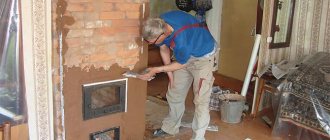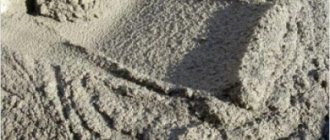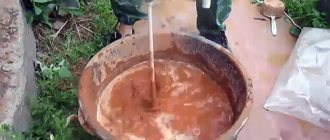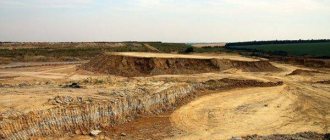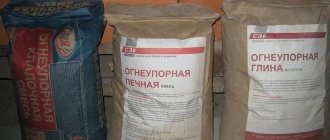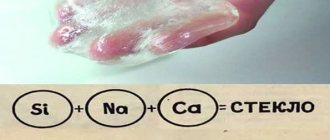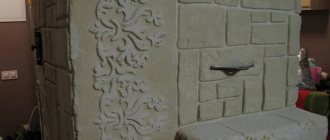Today, the construction of buildings can be made from various materials. New, cost-effective construction technologies from combined materials are gaining popularity, but despite all the new products, brick construction is considered the most reliable, and buildings are warmer and more durable.
An important element of brickwork is the mortar, which is used to create a durable structure from individual elements.
Requirements for mortar for bricklaying
The main requirements for the solution are the requirements for strength and durability.
Based on strength, solutions are marked from M4 to M200. Frost resistance - from F10 to F200.
Important!
In terms of strength, the solution must meet the requirements of the project, and in terms of durability - the operating conditions of the structure.
It is interesting that the strength of brickwork on fresh, unhardened mortar is 3 times less than the strength of the same masonry on hardened M100 grade mortar.
In addition to strength and durability, an important requirement is sufficient mobility of the solution and its moisture-holding capacity.
The point is not only that a mobile solution that is not prone to delamination is more convenient to work with and saves time, but also that such a solution compacts and fills the seams better, as a result of which the strength of the masonry can increase by 1.5–2 times .
Ready-made mixtures for laying stoves
In addition to solutions that are prepared independently, customers are offered a large number of ready-made dry mixtures intended for laying stoves. Plasticizers and additives are added to the compositions to ensure strength and elasticity, moisture and frost resistance, and other necessary qualities.
There are several ready-made mixtures for masonry stoves on the market, offered by various companies. Popular:
- Borovichi SPO - a range of heat-resistant mixtures are offered for the manufacture of fireboxes and walls with intense heating. The line includes plaster mortars and compositions for making foundations.
- Plitonit SuperFireplace is a fireproof mixture intended for interior and exterior use. The optimal thickness of the mortar for laying is 3-4 mm. A bag of dry mixture is enough to lay 90 pcs. bricks
- Terracotta - kaolin sand and premium clay are used in production. Terracotta mixtures, after the masonry has hardened, are not afraid of direct exposure to fire. Layer thickness from 3 to 12 mm. It is recommended to use terracotta refractory mixture for laying a stove made of red ceramic and fireclay bricks.
- Pechnik – the brand produces a line of refractory mixtures for laying the combustion chamber of a stove, making barbecues, fireplaces, etc. Pechnik's assortment includes compositions for repair work and grouting.
- Parad RK - the company produces dry and ready-made mixtures for laying stoves, intended for construction and repair work of any complexity. The joints are grouted using the mortar itself; no grouting is required.
- Universal HKM Wolfshoher Tonwerke is a fireclay mixture characterized by a gray color and high adhesive strength. The prepared solution remains workable for a week after preparation, provided the container is covered with oilcloth. Universal HKM Wolfshoher Tonwerke - modern mortars that do not contain sand, which reduces the risk of subsequent destruction of the masonry.
- Kiln House "Makarovs" - the company's product range includes solutions made from white red and blue (Cambrian) clay. The products are distinguished by high quality and resistance to intense heat and acidic substances.
What are the types of masonry mortars?
The main component in masonry mortar is the binder. Solutions can be prepared on the basis of cement, lime, clay, gypsum. In low-rise construction, as well as in cases where there is no need to use high-grade mortars, local binders are used, widely available in the region, for example, lime-slag or lime-ash cement.
Since each binder has its own advantages and disadvantages, complex mortars are also prepared using several types of binders, for example, cement-lime, cement-clay mortars.
In addition to the binder, the composition of the masonry mortar includes:
- sand,
- water,
- additives of mineral or chemical nature.
For brickwork, mortars mixed with sand with a maximum particle size of 2.5 mm are used.
Important!
The composition of the solution is selected depending on the following factors:
- bearing capacity of the structure,
- operating conditions of the product.
The solution recipe takes these factors into account and is selected depending on the selected type of binders and sands.
Main types of masonry mortars:
- cement;
- lime;
- cement-lime;
- cement-clay.
Preparing walls before plastering
Clay mortar, due to the lack of chemical bonds with the plastered surface, does not adhere well to a smooth base. Therefore, when facing bricks, the joints must be jointed before plastering.
To reinforce wooden surfaces finished with clay plaster, shingles are used . The use of plaster mesh in this case is not very convenient. Since clay is not as flexible as gypsum, it will not bond well to the mesh.
Shingles are narrow boards 3-5 mm thick, which are nailed onto the wall. The wooden planks are positioned at an angle of 45°. Moreover, the nails should not go into the wall completely, but only halfway. The rest of them are bent and recessed into the wall. In this case, the shingles will hold up better.
Cement masonry mortar
The cement mortar is prepared on the basis of cement (Portland cement), which is a water-hardening binder. Cement forms a strong material in the presence of water through hydration reactions.
Typically, cement mortars are used where the structure is exposed to aggressive environments (including humidity). Foundations and plinths are always made with cement mortar.
The advantages of cement masonry mortars are:
- strength;
- durability;
- water resistance, frost resistance;
- resistance to the development of fungus and mold;
- no restrictions on use (can be used, for example, for structures that will be used in conditions of high humidity, exposure to low temperatures or aggressive environments);
- rapid strength gain, which is especially important in multi-story construction.
Among the disadvantages of cement mortars are their high specific gravity, rigidity, and low mobility, which affects not only ease of use, but also how well the work will be carried out and, ultimately, how durable the structure will be.
To make the cement mortar more mobile and workable without adding excess water (which entails a loss of strength), plasticizing additives are used.
Important!
The depth of immersion of the cone in cement mortars for brickwork is from 9 to 13 cm.
The cheapest additives of this kind are slaked lime and clay. But their use is not always convenient. The lime must be slaked, that is, mixed with water and left for several days while the reaction occurs. Clay must have certain characteristics.
Special plasticizing additives are very convenient to use, for example, CemStone, which completely replaces clay and lime in cement masonry mortars. The supplement is laboratory tested and comes with clear instructions for dosing and use. It provides masonry mortars with all the necessary properties:
- increases the “lifetime” of the solution (up to 5 hours), thus allowing you to mix it in large quantities at once and save time or order it at a mortar unit;
- eliminates the delamination of the solution, as a result of which it does not require constant stirring;
- increases the efficiency of cement, allowing the use of even stale cement;
- does not cause corrosion of metal embedded parts and fittings;
- reduces the time for full strength gain (7 days instead of 28 days, which is required for a solution without additives);
- gives the solution increased characteristics of water resistance and frost resistance.
Hardening of the cement mortar occurs within 28 days, after which the mortar gains its design strength. The strength gain does not occur linearly: the fastest rate of hardening is observed immediately after laying the mortar, then it gradually slows down. Therefore, the more time has passed, the less adverse external influences affect the hardening process.
Adverse effects include too high or too low ambient temperatures and low air humidity. The optimal air temperature is +18–22° C and almost one hundred percent humidity.
Important!
The lower the ambient temperature, the slower the rate of strength gain, as can be seen in the table. At temperatures below +5°C, strength growth stops. Subsequently, when the air temperature rises, the solution gains strength, but is less durable than when cured under optimal conditions.
Obviously, it is impossible to avoid the work of laying bricks at low and subzero temperatures, because in this case it would be necessary to postpone construction for several months, which is not economically feasible.
In these conditions, masonry work can be carried out without compromising the strength of the structure if you use anti-frost additives, for example, CemFrio and HotIce from CEMMIX, which not only allow you to work at negative temperatures (down to –20°C), but also have plasticizer properties, as well as provide the following benefits:
- saving cement up to 10% without loss of strength;
- increasing the mobility of the solution;
- elimination of solution delamination during transportation and storage.
Additives CemFrio and HotIce are compatible with any type of cement and are safe for humans.
Cleaning clay and sand
Scheme for determining the readiness of a clay solution
- Sand. It must be sifted through a sieve with a mesh size of 1.5 by 1.5 millimeters. Having gotten rid of large particles, the sand is washed. For this purpose, a kind of net is made using ordinary burlap. The structure is fixed, material is poured into it and washed with running water until the water coming out of the net is relatively clean. Impurities have been removed.
- Clay. There are 2 cleaning methods:
- We pass the dry clay through a sieve with a mesh size of 3 mm (this is the thickness of the seam that is considered correct).
- Alluvial method. Take an oblong container (small bathtub, or trough). Installed at an angle of about 8 degrees. The upper part is filled with clay, the lower part with water. In this case, the substances should not come into contact.
The clay is then washed or brushed with water using a scoop. Over time, a homogeneous mass forms in the lower part, which is transferred to another container and filtered.
Soaking clay
Regardless of whether you purchased a ready-made composition or extracted the material yourself, the clay must be soaked before use.
To do this, pour it into a prepared container in a layer of 20 centimeters, level it and fill it with water so that the liquid completely covers the dry substance. Then the next layer is added and poured again.
After 24 hours, the composition is mixed, water is added if necessary, and only a day after this, the clay “sour cream” can be used for work.
Preparation of the solution
First, a sand layer is poured, then clay is poured, and sand is poured again. If there are clay puddles on top, sand needs to be added. The resulting composition is thoroughly mixed until a homogeneous mass resembling sour cream appears. To achieve greater strength, it is recommended to add 150–200 grams of salt per bucket of composition.
A high-quality mixture, when filtered through your fingers, gives a feeling of roughness, rather than a film with a small inclusion of grains of sand.
It will be easier to prepare a clay solution if you purchase the ingredients for it in a store. But you shouldn’t trust the manufacturer unlimitedly. It is better to check the fat content and sift the bulk materials.
Lime mortar for masonry
Our distant ancestors used lime masonry mortars to erect magnificent buildings that have stood for centuries and are still standing.
The fact is that slaked lime, an air-curing binder, gains strength in air, and this process continues for a long time. Even after years, such a solution continues to gain strength.
But for construction work, such a slow increase in strength is rather a disadvantage, because we want to get a strong structure not in 100 years, but in a few weeks. The use of lime masonry mortars in multi-story construction is especially inconvenient, since you have to wait a long time before starting the construction of the next floor.
The advantages of lime mortars include their low thermal conductivity, good plasticity, and high hygienic properties (they “breathe”). However, they are quite fragile and unstable to high humidity.
They are used only for masonry that is located above ground level and is not in contact with the ground.
Advantages and disadvantages
Plastering walls with clay has many advantages:
- Environmental friendliness; clay does not contain harmful impurities.
- Fire resistance: it is absolutely not afraid of fire.
- This material easily sticks not only to concrete or brick, but even to wood. In the latter case, shingles are used to secure it.
- Even a non-professional can work with plastic clay mortar.
- It is able to “breathe,” that is, absorb moisture from the air and release it when the relative humidity changes, which is very important for creating a comfortable microclimate.
- Adsorption. It has been noticed that allergy sufferers feel more comfortable in rooms decorated with clay plaster. After all, clay can absorb odors and bind harmful substances.
- It costs absolutely nothing: you can dig it up with your own hands in the nearest quarry or in your garden.
- Good sound insulation and heat conservation.
Cement-lime masonry mortars
Cement-lime mortars are prepared from cement, sand and lime paste with the addition of water.
As a result, we obtain a solution that is more plastic than cement (since lime works as a plasticizer) and more durable, waterproof, and resistant to fungus than lime. Cement-lime mortars are also frost-resistant.
The proportions of cement and lime in solutions may be different; Depending on the formulation, such solutions can be used for both above-ground and underground parts of buildings.
Important!
In cement-lime mortars, plasticizers are also used to reduce the consumption of cement and lime.
We recommend studying: Plasticizers
Concrete and heat-resistant concrete mixtures
Concrete mortar is also used for the stove foundation and chimney above the roof. Its strength is not inferior to limestone, hardening begins after 45 minutes. Before mixing, the components are sifted through a sieve. First, sand is poured into the container, and cement is placed on top of it. Stir until smooth, then add water. It is important to achieve a viscous consistency, not thick and not too runny.
For a monolithic firebox, a heat-resistant concrete mixture is used. Its composition is as follows:
- Portland cement M400 1 part,
- crushed brick 2 parts,
- sand 2 parts,
- fireclay sand 0.3 parts.
Strength increases if you use quartz sand instead of ordinary sand. Refractory concrete is characterized by large fractions (up to 10 cm) and high density. The following proportions are used as standard: 8 liters of water per 20 kg of mixture. Mixing is carried out mechanically, for example, in a special mixer.
You can also use a shovel, but then the quality will be lower, since it is impossible to achieve good uniformity manually. It is undesirable to increase the amount of water, as this will reduce the physical properties of the mixture. At the same time, stirring is continued even if there is confidence that there is not enough water. It is necessary to work with such a solution quickly due to its rapid hardening.
For masonry, different types of mortars are used, made from clay and cement, which are made independently. There are ready-made mixtures.
Cement-clay masonry mortars
Cement-clay masonry mortars are stronger than cement-lime mortars and set faster. Typically, in such solutions, cement is mixed with finely ground clay in various proportions, and the solution also includes sand and water.
Due to the fact that clay retains water well, this solution can also be used at low temperatures.
Important!
Masonry mortars, depending on the composition, may have special properties, for example, they can be heat-insulating, heat-resistant or decorative, colored, allowing to achieve an aesthetic effect.
Watch the video: Laying bricks with Perel colored mortar
What clay is suitable for plaster?
The ratio of clay and sand in the composition directly depends on the fat content of the clay. Very oily clay requires much more sand. Proportions can vary 1:5 (clay-sand); 1:4, 1:3 (for clay of medium fat content) and even 1:2. If the clay is very thin, then sand may not be added at all. Please note that you need to measure components not by weight, but by volume. To do this, it is more convenient to use a bucket or large jar. To select the proportions of the clay solution, you need to determine the fat content of the clay . This is done as follows.
Prepare 4 types of the indicated solutions with different sand contents and try to roll a small ball of 3-4 cm in size from each of them. Now throw each of them from a height of about 1 m.
The “correct” ball, when dropped on a hard surface, should not change its shape much or be damaged. If it is flattened, the solution is too greasy. It will crack as it dries. If it crumbles, then the clay is thin, and you need to increase its ratio in the mixture, otherwise the plaster will be fragile.
Also, to check the readiness of the solution, you can place a clay ball on a hard surface and flatten it, reducing its height by half. Ideally, small cracks should appear along the edges of the sample. If they don’t appear at all, then more sand is needed. If the cracks are deep, then, on the contrary, clay is added.
You can try to roll out the prepared solutions into a long rope 20-30 cm long with a cross-section of a couple of centimeters. By experimenting and selecting the ratio of sand and clay, it is necessary to ensure that such a flagellum does not crack after bending.
Advice! If you want your clay plaster to last as long as possible, protect it from moisture with a thin layer of cement (ironizing) or paint.
Recipes for masonry mortars
The solution recipe is selected depending on the desired characteristics and is determined by the design documentation.
One of the most common cement mortars in construction, grade M100, for brickwork includes (per 1m3):
- cement – 250 kg;
- sand – 1580 kg;
- water – 140 l;
- CemStone additive – 1.25 l.
Solutions of different brands are used for different types of structures. Grades M150 and M200 are used for hydraulic structures.
How to mix masonry mortar with your own hands
Unlike large-scale construction, for which masonry mortars are ordered from mortar units, in private construction they often prefer to mix the mortars themselves.
Construction mixers and concrete mixers are used to mix solutions. In this case, it is especially important to use plasticizers in order to achieve an ideal solution and, if possible, eliminate shortcomings.
The order in which the components are mixed may vary. Some craftsmen mix dry ingredients and add water to them, others first pour water into a concrete mixer, then add sand to the water and only then cement. Lime dough is mixed with water to obtain lime milk, then it is used instead of water.
One of the mistakes when mixing masonry mortars with your own hands is adding detergents to them instead of a plasticizer. Since the exact composition and recipe of liquid soap are not known to us, we, in fact, do not know what we are adding to the solution and how this will affect the strength of the future structure. Adding a plasticizer in this case is the right step, which leads to predictably good consequences.
Deciding on proportions
Clay is divided into fatty and lean. A greasy solution will be plastic, but will crack after complete drying; a thin solution will begin to crumble under the influence of a small force.
There are several methods for determining the required amount of sand in a solution:
Ball method
To begin with, equal amounts of clay are poured into 5 containers (a liter jar is fine), after removing large lumps. Then sand is poured into the jars in a ratio of 10, 25, 75, 100, 150%. Add water and solution and mix thoroughly until a homogeneous mass is obtained.
From each sample a ball with a diameter of 5 centimeters is molded, which we turn into a cake about 3 centimeters thick. Let the material dry for 10 days at a temperature of 20 degrees (room).
After this period, the edges of the cake are carefully examined. Cracks have appeared - the composition is greasy, crumbles when pressed - thin. A normal cake is not damaged and can withstand a fall from a height of one meter.
Paddle method
Determining the fat content of a solution using a paddle
A container (usually a bucket) is filled with clay and sand. Gradually adding water and stirring, a creamy solution is achieved. Using a flat board, mix the contents a little and take it out. If a millimeter-thick mixture remains on the board, you need to add clay. Two millimeters and the presence of clots are the norm, but anything more is a greasy solution, you need to add sand.
Flagella method
A roller (15 millimeters thick and 15 centimeters long) is molded from a composition with different proportions and stretched. The fatty sample stretches easily and has a small thickness at the breaking point. A normal flagellum after rupture has a diameter of about 3 mm, but a skinny specimen breaks quickly and practically does not decrease in size at the ends.
How much solution will be needed
Before starting construction work, it is necessary to carefully calculate how much materials will be required. The consumption of mortar for brickwork is calculated per 1 m2 and also depends on the thickness of the brick and the thickness of the walls in the bricks. It can be viewed in the table.
Based on the required amount of solution, you can calculate the amount of necessary consumables.
We advise you to study: For plastering and masonry work
Preparation of stove solutions: types, applications, recipes
When performing furnace work, different solutions are prepared for different purposes:
- foundation installation;
- furnace masonry;
- plastering and facing works.
For these purposes, solutions are used:
- clay;
- lime-clay;
- sand-cement;
- lime.
The stoves are placed on a clay mortar, adding a little salt or cement for strength. Many people use only clay with water, without additives. To make mixing the mortar easier, some stove makers make wooden flooring from boards with low sides. The wide working mixing area allows for better preparation of the solution.
The stoves are placed on a clay-sand mortar
First you need to determine how much material you will need. The calculation is as follows: when laying 50 bricks flat with a seam thickness of 3–5 mm, about 20 liters of masonry mixture will be required (we increase by 15–20% if we are building a Russian stove).
Clay mortar is used for the main structure of the furnace; it can also be used for lining. Consists of clay and water. Sometimes filler is added: sawdust, shavings, construction sand. The clay mixture is prepared in the following proportion: 2 parts clay, 1 part aggregate added. More often than others, clay-sand mortar is used for laying the stove.
The ingredients are mixed into a homogeneous mass until creamy. The masonry mass should come off the shovel well and leave no traces. Also, no separated water should appear on the surface - if this happens, you need to add sand. To give greater strength, salt is added to the solution: 100–250 grams per bucket of solution. Cement is used less often - 750 grams per bucket.
How to prepare mortar for laying stoves is demonstrated in the video. At the same time, you will see the consistency to which you need to soak the clay.
Sand-cement mortar is used to level out uneven surfaces and oven cladding (tiles, mosaics, stones). Cement mortar for the furnace is used to seal joints when laying the foundation. It is prepared as follows: measure out the required amount of construction sand and cement, mix well, fill with water to the desired consistency - such a state when it is sufficiently mobile and is squeezed out of the seam without much pressure. The proportions of materials depend on the brand of cement composition, most often 1:2.
Limestone is used as a mortar for plastering stoves, for laying foundations and pipes. Its preparation is completely different. First, the lime is slaked and kept in a special pit for about a week. After this, prepare a solution with sand. The ratio depends on the fat content of the lime (usually 1:2 or 1:3).
Lime-clay mortars with the addition of asbestos are also used for plastering the stove to give greater strength. The proportions of the solutions are as follows:
- clay-lime dough-sand-asbestos 1:1:2:0.1;
- clay-sand-cement-asbestos in the same ratio;
- gypsum-sand-lime paste-asbestos 1:1:2:0.2.
The preparation technology consists of combining all the dry ingredients and adding clay, gypsum or milk of lime diluted with water. Then the components are mixed until smooth.
There is a fireproof (fireclay) mortar for laying the core of furnaces. To prepare it, mix fireclay and fireclay in a 1:1 ratio, then add water (a quarter of the clay mass) and mix well.
This is what a good mortar on fireclay brick looks like
It is necessary to monitor the quality of the solution. After all, only a sufficiently plastic composition can ensure good adhesion of the stove masonry and tightness of the seams.

